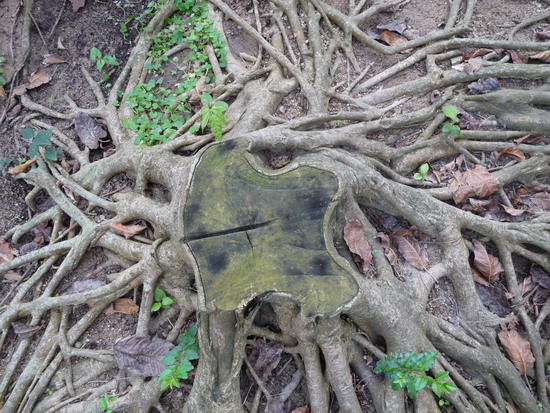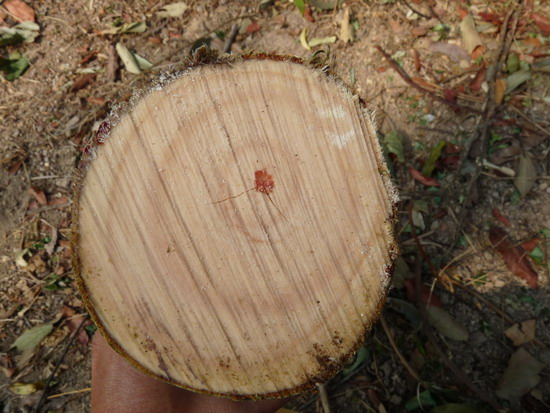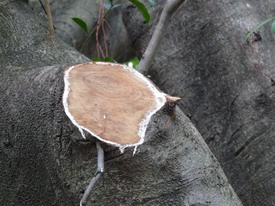|
|
|
|
|
 |
|
早陣子與朋友閒談寫一些樹木的文章,構思了一個新題目"十塊木頭,十個故事",以十棵樹的橫切面講解一些樹木的特性,當中有血桐(流血的位置),榕(流白汁的位置),龍眼(沒有年輪),火焰木(輕),樹洞(結構),年輪(估樹齡),生長方向和速度(年輪的密度),樟(防蟲)等.只要對樹木有足夠的認識,單觀察木塊,也可以描述,解釋和預測一些樹木的特性和顯示的現象. 上左圖是細葉榕新鋸的痕跡, 黏性白汁尚在滲出.藏白汁是榕樹的特性,可以防止昆蟲蛀食樹木.上右圖的是黃葛樹的樹頭.此樹種是大喬木,需要龐大的根系來支撐整棵樹木. I have discussed with my friends before about writing some articles of trees. A new topic 『Ten pieces of wood tell ten stories』 is come out; the stories begin from the cross section of the trunks. We explain some characteristic of trees through them. They are Macaranga tanarius var. tomentosa (location where the bloody red liquid comes out), Ficus microcarpa (location where the milky white liquid comes out), Dimocarpus longan (diffuse porus), Spathodea campanulata (light weight), cavity (relate to structure), growth rings (relate to age of tree), the width of growth rings, ( grow up direction and progress), Cinnamomum camphora (prevents insects), etc. If we have better understanding, we can describe, explain and predict some characteristic and phenomenon of trees even we only have those trunks! The top left picture is a Ficus microcarpa with the trace of newly pruning. One of its features is the white sticky flowing sap. This feature protects the tree from the insect borers to eat into the trunk. The top right picture is the root of a Ficus virens var. sublanceolata. It is a kind of huge tree which needs to be supported by a strong and expanding root system. |
|
 |
 |
|
上左圖的是血桐,與細葉榕不同,它流的是紅色汁液(樹汁氧化後轉紅),位置在中間而不是外圍;它的年輪只有數個圈,每輪佔有相當闊度,生長速度是相當快呢!它的年輪右上窄,左下闊,生長速度右下方的位置快一點,有可能那裡是東面呢!也有可能左上方有大樹阻擋陽光.上右圖是空心的石栗,空了芯並不影響健康 ,因為維管束是在近樹皮的位置.中空佔了7成樹幹,但外圍完整,在結構上尚有七成強度. The top left picture is Macaranga tanarius var. tomentosa, it is different from Ficus microcarpa , in which its bloody red liquid is come out from the pitch but not the outer circle; the growth rings show it was young and grew up rapidly! Its growth rings are narrow in right top hand side and broad in left bottom side have indicated that it has grown faster in the right bottom part. It may due to the shadow of other trees at the right top hand side or the sunrise at the right bottom hand side. The top right picture is an Aleurites moluccana with a big cavity at the middle of trunk. The emptiness does not imply it is unhealthy as the vascular vessels located at the outer circle is not damaged. The trunk is 70% empty but its integrity can be prevailed in the outer part. Therefore, it is still 70% structurally strong. *translated by Paula Wong. |
|
